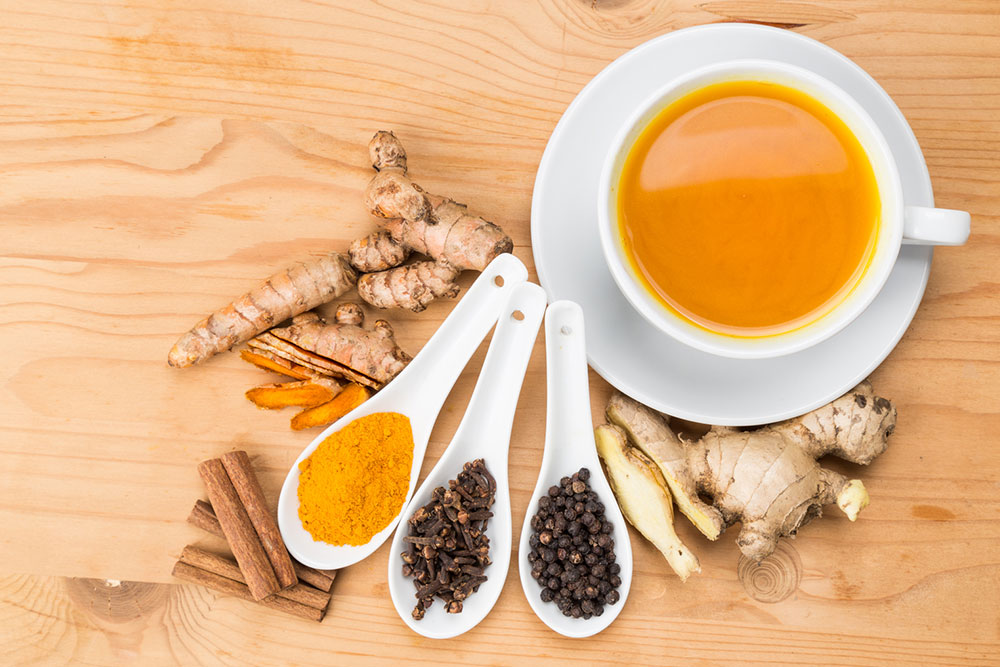All You Need to Know about the Benefits of Turmeric
Today, people all over the world are beginning to recognize the benefits of turmeric. This humble root is an essential part of Indian and Southeast Asian cuisines and medical systems. Turmeric’s active constituent is an organic chemical called curcumin.
What is turmeric?
Turmeric is a rhizome plant from the ginger family.

People in these countries use the rhizome root-stems as a spice for color and flavor in a variety of dishes. It is also used as a dye and cosmetic. It is also used for religious purposes in some countries.
The benefits of turmeric have been known for a long time in the traditional medicine systems of these countries. Turmeric’s active ingredient curcumin provides a wide range of health benefits.
Some parts of the harvest are used fresh, while the rest of it is boiled and dried in ovens. The dried roots are then ground into a fine powder. This powder consists of nearly 70% carbohydrates, almost 13% water, various proteins, fats, minerals, essential oils, and natural phenols or curcuminoids that give this ingredient a bright yellow-orange color.
Curcumin
The main constituent of turmeric is a phytochemical (plant-based chemical) called curcumin. In some traditional medicinal systems, turmeric is valued for its diverse properties. However, modern research was initiated only in the 19th century when curcumin was isolated from turmeric chemically. Its complete chemical structure was mapped only in the early 20th century.
The benefits of turmeric
Turmeric is an essential ingredient in Indian, Southeast Asian, and Middle Eastern cuisines. It imparts an attractive color to food and gives it a rich, palatable appearance. Apart from this, its subtle yet slightly bitter, pepper-like aroma and sharp mustard-like flavor complement other spices in a variety of dishes. It is a part of almost every kitchen across these countries, and almost no food is prepared without a dash of turmeric. The leaf of the turmeric plant is used as a package for steaming, and its whole fresh roots are pickled.
Commercially, turmeric is used as a coloring agent in a variety of baked and canned goods, dairy products and beverages, cereals, and sauces.
Modern variations like turmeric latte and golden milk are also getting popular across the world.
Cosmetic uses
Other than the kitchen, one can also use turmeric in a variety of DIY face masks. Thus, by using it, one can get a natural glow. This anti-inflammatory ingredient also contains antioxidants. Some women rub a turmeric-and-water paste on their faces to reduce facial hair. It also acts as a barrier against microbes, UV rays, and pollution.
Medicinal uses
Turmeric is said to heal wounds, speed up scabbing in diseases like chickenpox, and treat hair loss and dandruff. Traditionally, it has been used to treat leprosy and other skin diseases. Turmeric paper is used as an indicator to test acidity/alkalinity. Its anti-inflammatory properties make it useful in controlling chronic inflammations. It neutralizes free radicals and slows down the aging process. Some studies show that curcumin, the active component of turmeric, could reverse and delay the onset of brain diseases like dementia. It can also lower the risk of Alzheimer’s disease and arthritis.
However, in clinical trials, and in the opinion of some medical professionals, these health benefits have not been conclusively proved. Research is ongoing in various parts of the world about the properties of curcumin.
Properties of turmeric and curcumin
- Powerful antioxidant
- Anti-inflammatory agent
- Antiseptic
- Regulates blood glucose levels
- Helps to maintain skin health
- Blood-thinner
- Relieves joint pains
- Provides relief from a sore throat
- Maintains balanced cholesterol levels
- Beneficial for brain function and mental health
- May have anti-cancer properties
Curcumin supplements
The bioactive content of curcumin amounts to only about 3% of the total weight of compounds contained in turmeric. Hence, you cannot take advantage of all the health benefits of curcumin by using turmeric in your meals. You can consult a doctor and take supplements that have curcumin extracts.
Absorption
Curcumin is not very easy to absorb in our bloodstream. If taken as a food additive or spice, adding another spice like black pepper helps its bioavailability and ensures better absorption. It is a fat-soluble compound. So, taking it in the form of turmeric latte (in coconut milk) or in dishes which contain coconut oil or other good fats helps the intestines in better absorption. Pigment-rich berries and fruits as well as red wine help to deliver the benefits of curcumin.
Precautions
Turmeric is known as a miracle spice, but too much of it is harmful. Some people may have allergic reactions to the topical application of turmeric. Over-use of turmeric and curcumin supplements can cause nausea, vomiting, and diarrhea. Since curcumin has the property of lowering blood glucose, it can cause hypoglycemia.
Being a blood-thinner, it increases the risk of bleeding and menstrual flow. It prevents the absorption of iron, so those with anemia should be careful. Some risks of reduced fertility have been noticed too. Pregnant women should avoid curcumin supplements because of the increased risk of contractions of the uterus.
People with gallbladder disease and kidney stones should also avoid curcumin supplements.


